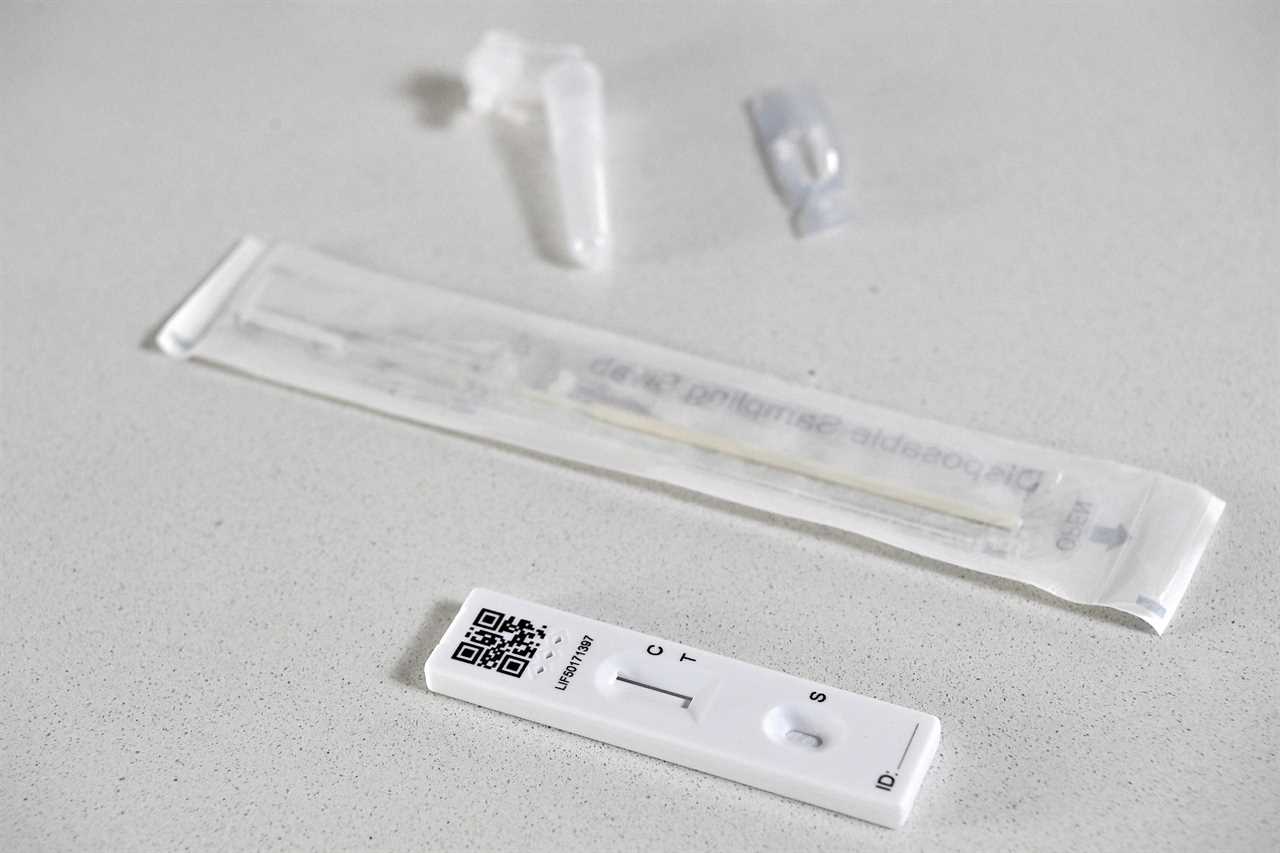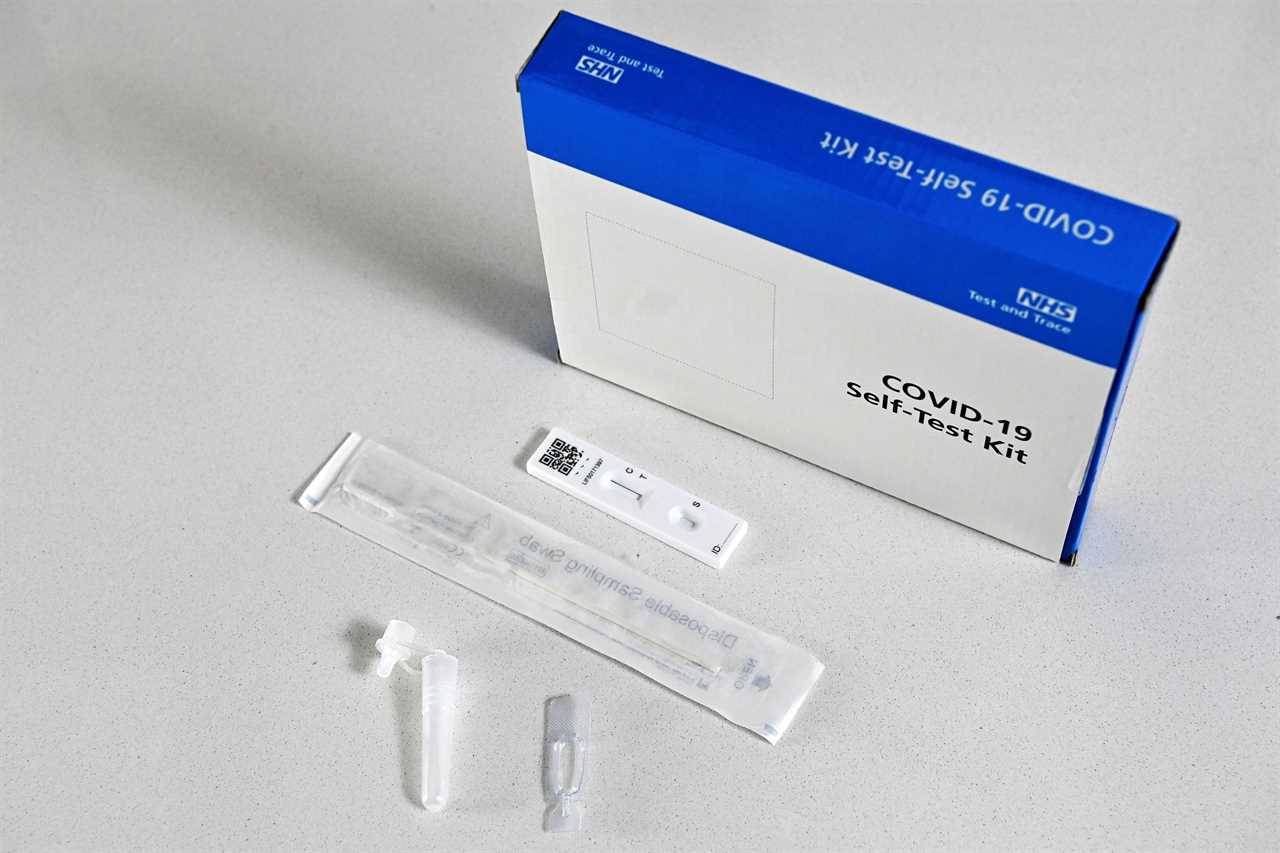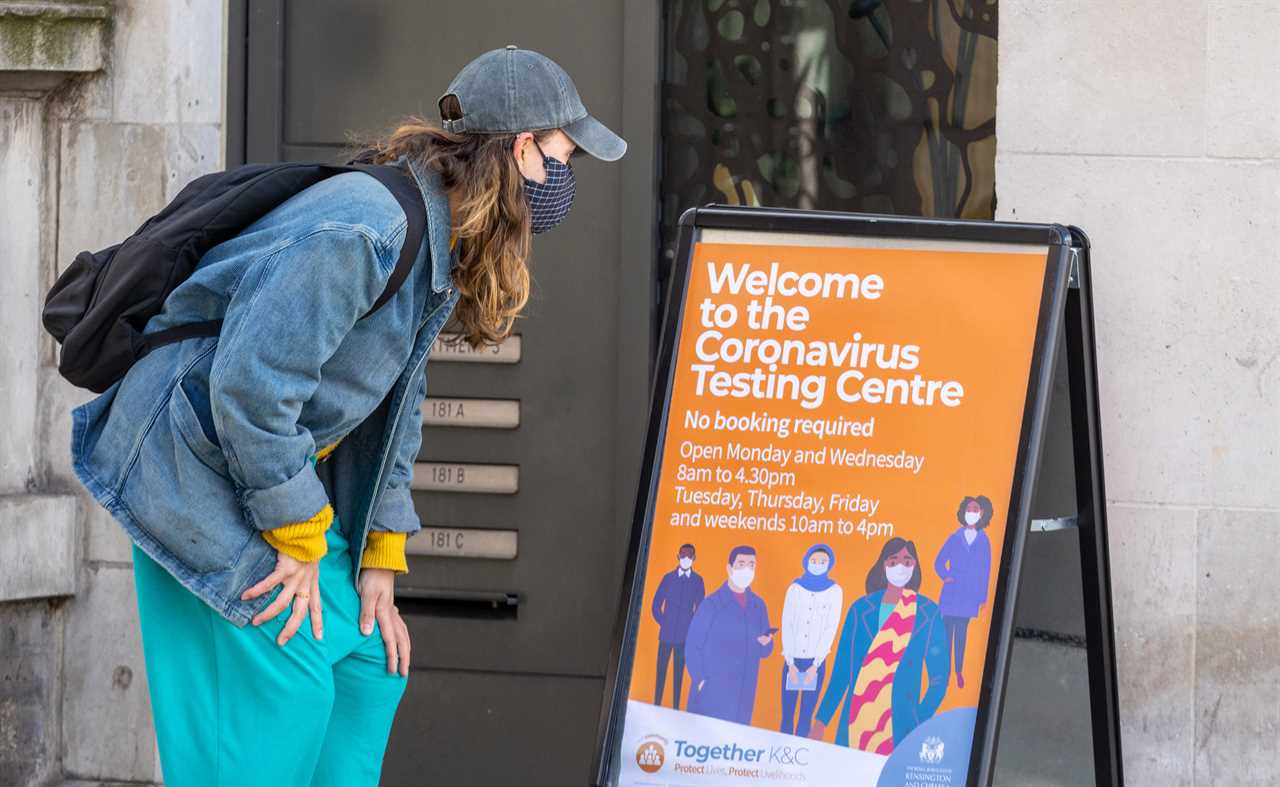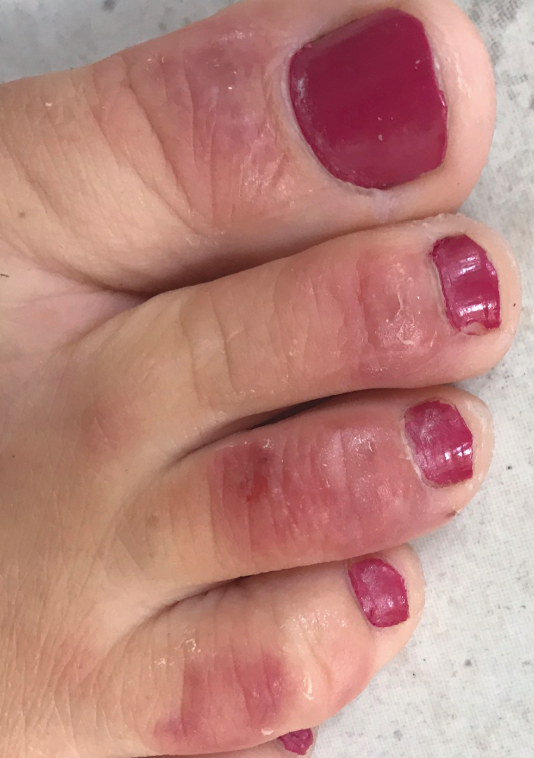ANYONE in England can now get a rapid Covid test – even without showing the most common coronavirus symptoms.
Prime Minister Boris Johnson has hailed rapid tests as a way back to “normality”.

Read our coronavirus live blog for the latest news & updates…

The Government hopes they will help find undetected cases of the coronavirus – as one in three people do not show signs of the disease.
Every day around 2,000 people are picking up the coronavirus, according to the latest figures from The ZOE COVID Symptom Study UK Infection Survey (ZCSS).
However this is only a prediction for symptomatic disease.
Estimations for cases for Covid both with and without symptoms say around 148,000 people have the coronavirus in England right now.
To try and detect every case of Covid, as part of the roadmap back to normality, the Government has today made rapid tests accessible for everyone in England.
Adults can get the tests either through home delivery, from a pharmacy, at school or work or other community testing sites.
But experts have warned that the rapid tests, formally called lateral flow tests, will not be able to pick up every case of Covid.
The tests are not as accurate as those offered free on the NHS for people with symptoms, called a “PCR test”.
Sometimes they will produce a “false negative” result, when a person is told they do not have Covid, when in fact they do.
One study previously warned that up to half of people with the coronavirus will be told they are negative, which could have serious consequences.
People may also be given a “false positive”, when the test says they have Covid when they don’t, which may lead to someone unnecessarily self isolating.


Tim Spector OBE, a professor at King’s College London who leads the ZCSS study, said: “This week the government announced plans to make home-based lateral flow tests accessible as a tactic to catch more cases.
“According to our own data five in 1,000 of these tests give a false positive result, so we are encouraging people to take a lateral flow test at least twice if positive and confirm it with a full NHS PCR test.
“However, people also need to know all the 20 symptoms, including sore throat, headache and fatigue, not just the classic three.
“So if you feel unwell with any of the symptoms of Covid, stay at home and get a test.”
Up to half of people in Britain don’t actually know what the symptoms of the coronavirus are, Prof Spector and his team have found.
The 20 signs of Covid-19
The ZCSS has been running since early May, 2020. It has so far recorded over a million swab results from app users, which it then links with reported symptoms to see which are most common.
Through analysis, the team say these are the signs of Covid to look out for:
1. High temperature (fever)
Around four in ten people who have symptoms of Covid have a high temperature, according to ZCSS.
Fever usually happens in the first week of illness and tends to go quite quickly.
A high temperature along with persistent cough and loss of change in smell and taste (below) are the three key signs of Covid listed by the NHS.
2. Persistent cough
A Covid cough is often described as dry, new and persistent – meaning many times a day.
The NHS says: “This means coughing a lot for more than an hour, or three or more coughing episodes in 24 hours (if you usually have a cough, it may be worse than usual).”
Around four in ten people with symptomatic Covid have a cough, ZCSS has found.
It’s estimated to be lower when considering those without symptoms at all, at around three in ten, according to data from the Office for National Statistics (ONS).

3. Loss or change in smell (anosmia)
Anosmia was not immediately recognised as a symptom of Covid, but is one of the more common signs.
If you can’t smell things such as coffee, flowers or food, you could have Covid.
It tends to be an earlier sign of infection, lasting around five days.
However, some people’s smell will not return for a while as part of long Covid, with sufferers reporting that things that once smelt beautiful are now grotesque.
Data from the ZCSS shows that loss of smell is the most predictive symptom of having a positive test for Covid, meaning it is a strongly specific symptom of the coronavirus.
4. Loss or change in taste (dysgeusia)
During coronavirus infection, food may also completely lose its taste, or taste different.
Known as dysgeusia, it is usually linked with loss of smell.
Both a loss of smell and taste are less common in people carrying the Kent strain of coronavirus – which is dominant in the UK – ONS data reveals.
5. Headache
Headaches can be one of the very first signs of the coronavirus, affecting around seven in ten adults with symptoms, according to ZCSS, and 30 per cent of infected people overall, ONS says.
It is rarely reported as the only symptom (15 per cent).
A Covid headaches tend to be moderately to severely painful, feel pulsing, pressing or stabbing, across both sides and lasting more than three days.
Of course a headache could be a sign of many other things – including dehydration, stress or too much screen time – which is why the NHS don’t use it as a strong marker for Covid.

6. Unusual tiredness (fatigue)
People who have Covid often describe feeling completely wiped out during their illness, sleeping for hours on end.
Data from ZCSS reveals it is one of the earliest signs of Covid, lasting between five to eight days.
On average, around eight in ten adults who are ill with Covid will experience fatigue, and a third of people infected generally.

7. Sore throat
A sore throat is a common symptom of Covid, data suggests.
Almost half of people who are ill with COVID-19 will experience a sore throat, app data suggests, but it is less common in the elderly.
People using the Zoe app have reported having a mild sore throat that feels similar to what you might experience during a cold or laryngitis.
ONS data suggests one in five people infected generally will experience a sore throat.
8. Diarrhoea
Despite being a respiratory disease, Covid can also cause tummy problems, studies have shown.
People reporting their symptoms to the app say it often starts on the first day of Covid illness, and gets worse during the first week.
Experts say it’s probably because the coronavirus invades cells in the gut.
ZCSS say diarrhoea is very rarely (2 per cent) the only sign of Covid, and up to 30 per cent of adults suffer with it, depending on their age.
9. Chills or shivers
Chills or shivers can sometimes accompany a high temperature.
The app data has revealed some people with long Covid report ongoing chills or shivers after their coronavirus infection.
The NHS does not list this as a symptoms of Covid, but the equivalent in the US – the CDC – does.
10. Sudden confusion (delirium)
Delirium is a more common Covid symptom in older people and can be difficult to spot.
It can cause someone to become withdrawn, drowsy, agitated, distressed or even aggressive.
Around 15 per cent of adults aged 16-65 with Covid symptoms have delirium, and nearly 20 per cent of those over 65 report it, app data shows.

11. Skin rash
Experts say there are an array of skin rashes that have been linked to coronavirus infection, including hives, eczema and heat rash like bumps.
For one in five patients, it is the only sign of infection, according to data analysed by KCL and published in the British Journal of Dermatology.
It is thought skin changes are due to the reaction of the immune system to the bug.
12. Covid tongue
While less common than other skin complaints, some people are also reporting changes to their mouth and tongue.
Prof Spector said in January he was seeing “increasing numbers of Covid tongues and strange mouth ulcers”.
Changes in the tongue, including pain, discolouration, swelling or a strange texture, are sometimes the result of an underlying condition.
And mouth ulcers are very common and can be caused by a range of things, including hot food or drink, medicines, stress, hormonal changes or vitamin deficiencies.
13. Covid fingers and toes
Covid fingers and toes appear to be the most specific to Covid, meaning the skin problem is very rarely caused by other problems.
The chilblain-like marks, which are red and publish bumps, may not even show until many months after infection.
Normally, chilblains are only seen in cold weather and in people who have existing problems with the blood supply.

14. Shortness of breath
Shortness of breath usually occurs a week after initial infection, ZCSS says, and is more common in older age groups.
People with shortness of breath might struggle to get enough oxygen.
It is therefore considered a more serious symptom of Covid because it could lead to needing hospital care.
While ZCSS say it is a more rare symptom of Covid, ONS data from people with and without symptoms say it affects around 12 per cent of people infected.
15. Chest pains
Zoe app data says chest pains aren’t a common feature of Covid but are more common in symptom-showing adults (28 per cent) than children (10 per cent).
It is probably as a result of coughing and the coronavirus spreading through the chest muscles.
If you have sudden and intense chest pains, it could be something very serious, such as a heart attack, and you should seek emergency care by calling 999.
16. Muscle pains
One in three people will suffer muscle pains – typically in the legs and shoulders – if they have Covid symptoms, ZCSS data shows.
It could also be a sign of a tough workout or working at home, as experts say if muscle pain alone is present, it is likely not Covid.
Look out for other signs of Covid to be certain.
17. Hoarse voice
A hoarse voice has been described as croaky, raspy, rough or quieter in people with Covid symptoms, and some even see a change in pitch.
Experts at ZCSS, who say a hoarse voice is rarer, explain Covid affects the tissues of the respiratory symptom, of which the voice box is part of.
The website says: “While it’s not a particularly strong predictor of COVID-19, if you have an unexplained hoarse voice we believe you should get a test just to be sure.”
18. Skipping meals (loss of appetite)
One in three people infected with Covid lose their appetites enough to skip meals, ZCSS say.
This goes up to four in ten for people over 65.
Loss of appetite it a common side effect of illness, and in Covid, typically occurs alongside fatigue and headache.
19. Abdominal pains
Abdominal pains are relatively common in day-to-day life and could be all sorts of problems.
During Covid illness, they are described as being generalised and around the middle. Anything more specific could be a sign of something else, such as appendicitis.
Children are more likely to have stomach complaints when sick with Covid – one in three, according to ZCSS, compared to one in five generally.
20. Runny nose
Experts have called for a runny nose to be included as an NHS symptom of Covid, with doctors saying it would pick up more cases.
A runny nose is listed as a coronavirus symptom on the World Health Organisation website, as well as public health sites in the US, Australia and Canada.
If you do not have any other symptoms along with your runny nose then it is highly unlikely that you have contracted the bug, and it could be hayfever, cold or allergy.
But it may be worth getting a Covid test anyway.
Get an NHS test if you feel unwell
Regardless of if you fit the classic Covid symptoms, researchers on the ZCSS study have urged people to get a test even if they feel slightly under the weather.
Currently the NHS only offers free tests to people if you have the three main symptoms of Covid – cough, fever or loss or change in smell.
But the app data shows that 31 per cent of people who are sick with Covid do not show these signs in the early stage of their disease.
They could have been diagnosed, however, if they had got a test.
Experts say testing everybody experiencing any of seven key symptoms – cough, fever, loss of smell, fatigue, sore throat, headache or diarrhoea – would detect 96 per cent of symptomatic coronavirus infections.






